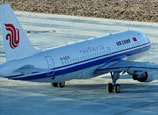
China is now on the road to full economic openness and its foreign trade structure will continue improving, as indicated by the fast growth in exports of some technology-intensive products. From January to October, China's exports of mechanical and electrical products grew 8.5 percent year-on-year, 0.7 percentage points higher than its whole export growth. Compared with its eastern, southeastern and southern regions, most of China's less-developed central and western regions, such as Chongqing municipality, Anhui, Henan, Sichuan and Jiangxi provinces, have all witnessed a faster export growth, a sign that China has achieved some substantial progress in realizing internal industrial transfer, promoting balanced development, extending the lifespan of its traditional labor-intensive industries and avoiding industrial hollowing.
China has shown greater determination to turn to domestic demand to bolster its economic development and develop itself into a consumption-driven economy. However, an economy of China's size is undercutting its development capability if it fails to pay due attention to foreign trade in the context of economic globalization. For China, the importance of foreign trade lies not only in how many external resources utilizes, or how many jobs it creates or how much output it produces. In the long run, China will likely forfeit its hard-won advantageous economic status in the international market if it cannot maintain its established trade advantages at a time when its economic growth is decelerating. The decline of Japan's once-prosperous home appliance and other pillar sectors, as a result of their failure to make sufficient efforts to maintain and expand their external market, should be a lesson to China.
The author is a researcher with the Chinese Academy of International Trade and Economic Cooperation, affiliated to the Ministry of Commerce.















 10th China Int'l Auto Exhibition to be held in Guangzhou
10th China Int'l Auto Exhibition to be held in Guangzhou


![]()
